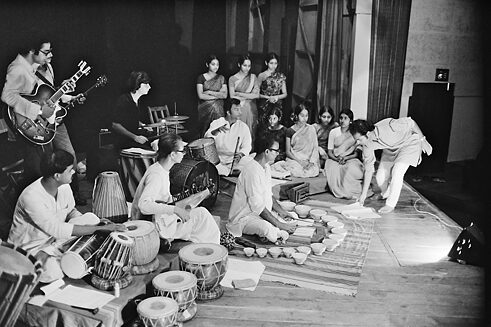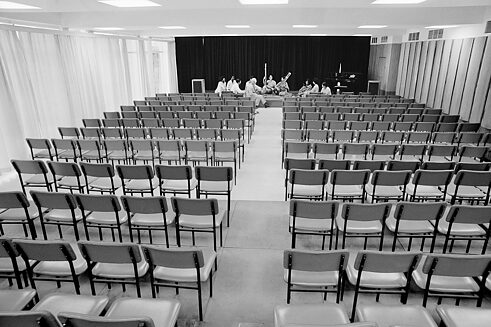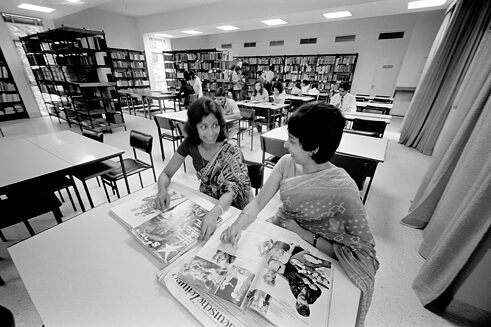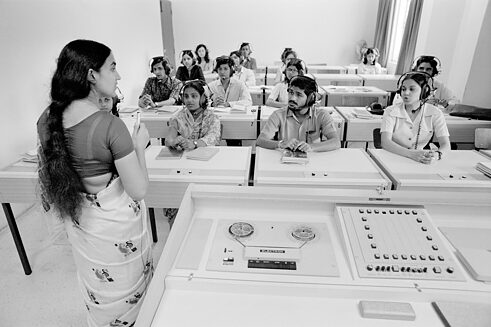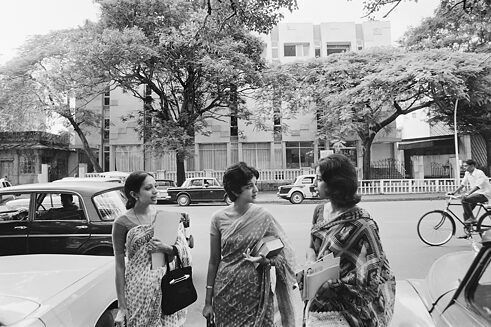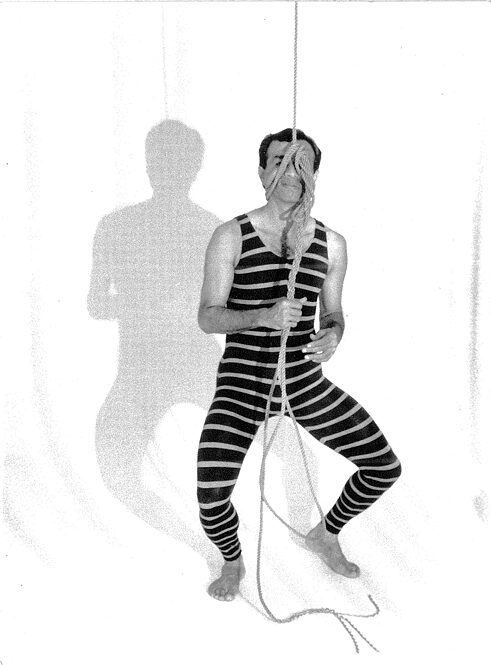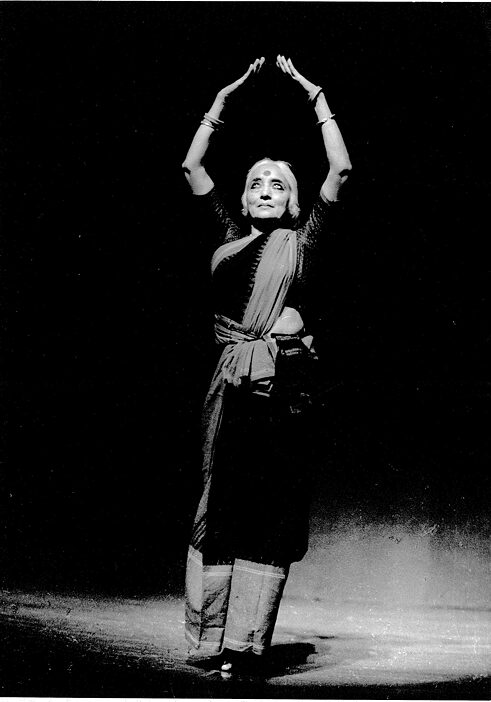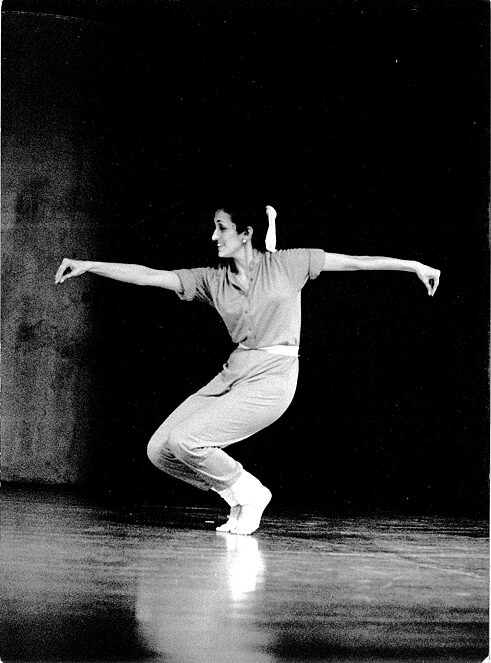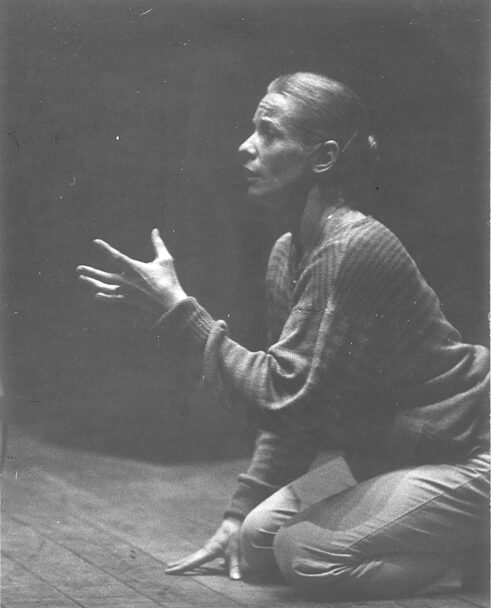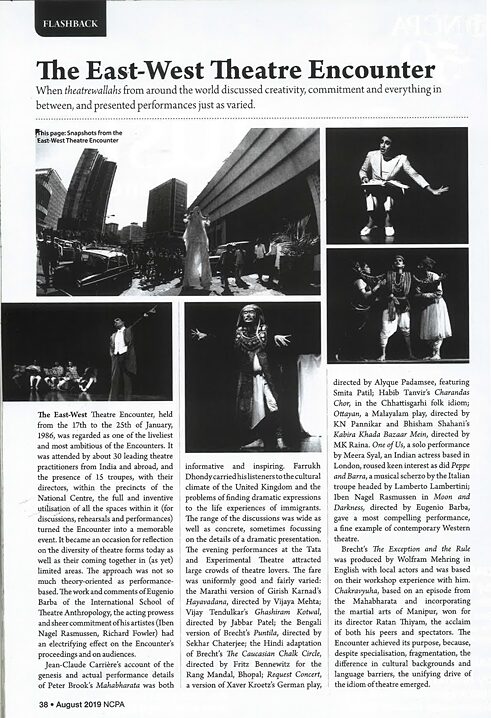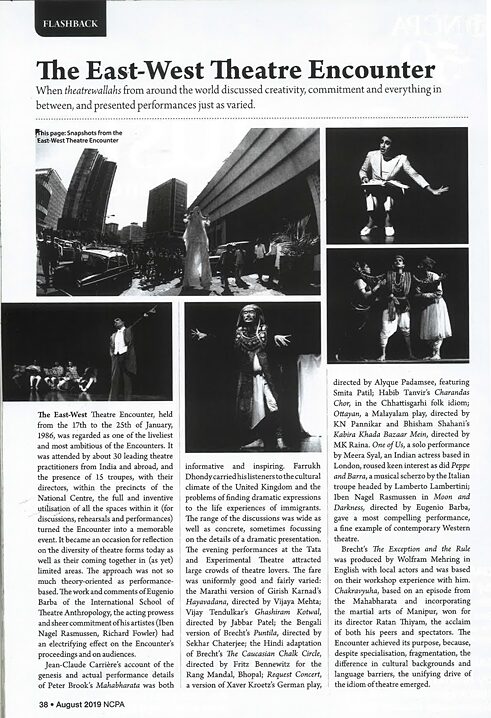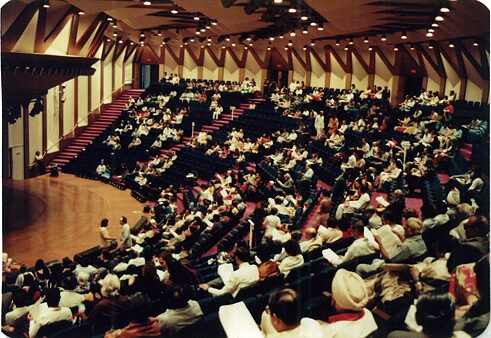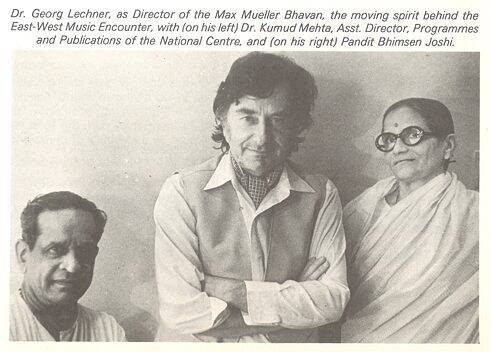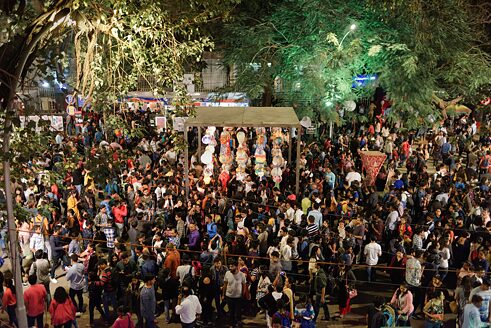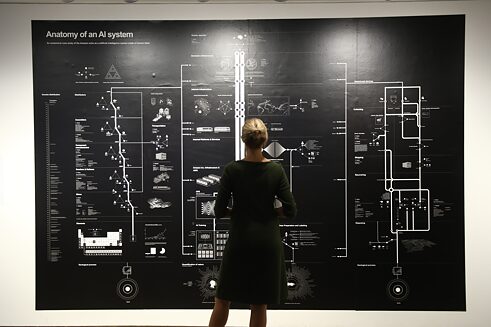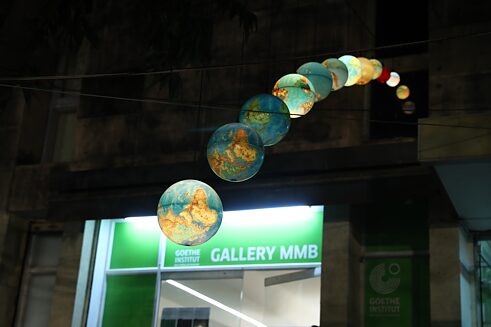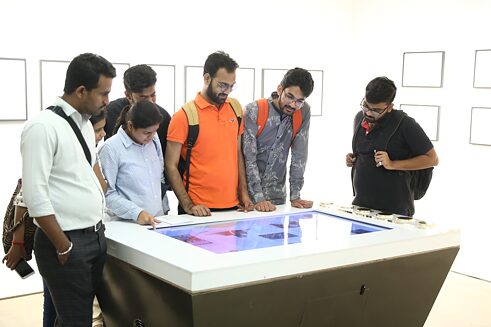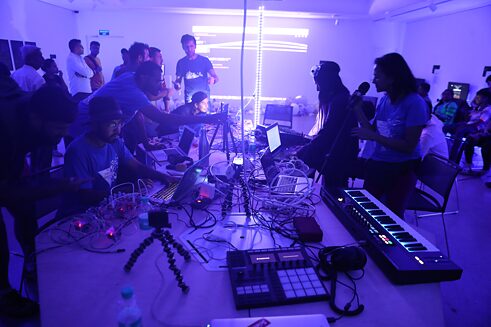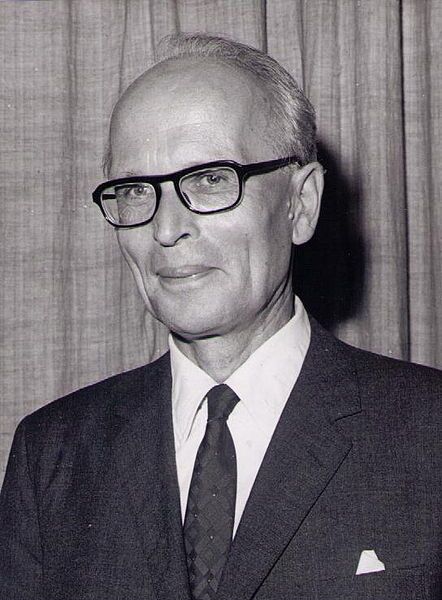 © Heimo Rau
On the 2nd of December, 1968, the Goethe-Institut / Max Mueller Bhavan Mumbai began German language classes in Malabar Hill, under the leadership of Heimo Rau and Dirk Angelroth.
© Heimo Rau
On the 2nd of December, 1968, the Goethe-Institut / Max Mueller Bhavan Mumbai began German language classes in Malabar Hill, under the leadership of Heimo Rau and Dirk Angelroth.
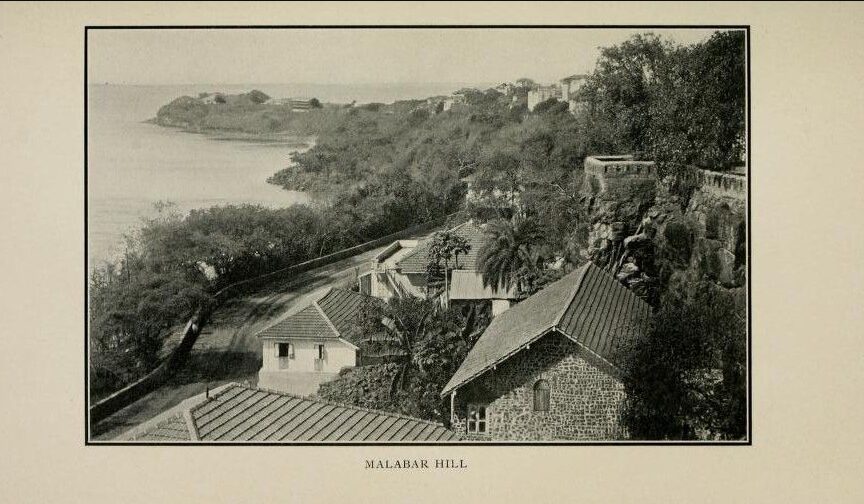 © Postcard
Officially inaugurated in 1969, the Goethe-Institut / Max Mueller Bhavan Mumbai was originally situated in the ground floor of philanthropist Ms. Bapsy Sabavala’s bungalow. Along with language classes, the institute now offered a taste of German culture with intimate concerts at the bungalow. Mr Dirk Angelroth, also an accomplished author, has described the idiosyncracies of holding public concerts in private homes in his writing.
© Postcard
Officially inaugurated in 1969, the Goethe-Institut / Max Mueller Bhavan Mumbai was originally situated in the ground floor of philanthropist Ms. Bapsy Sabavala’s bungalow. Along with language classes, the institute now offered a taste of German culture with intimate concerts at the bungalow. Mr Dirk Angelroth, also an accomplished author, has described the idiosyncracies of holding public concerts in private homes in his writing.
The Institut became too large for the quaint Malabar Hill bungalow, and moved to its current location in the CSMVS Museum annexe, where it spread out over three floors – with the Stuttgart Hall on the ground floor, library, administration and programme department on the first floor and language classrooms on the second floor.
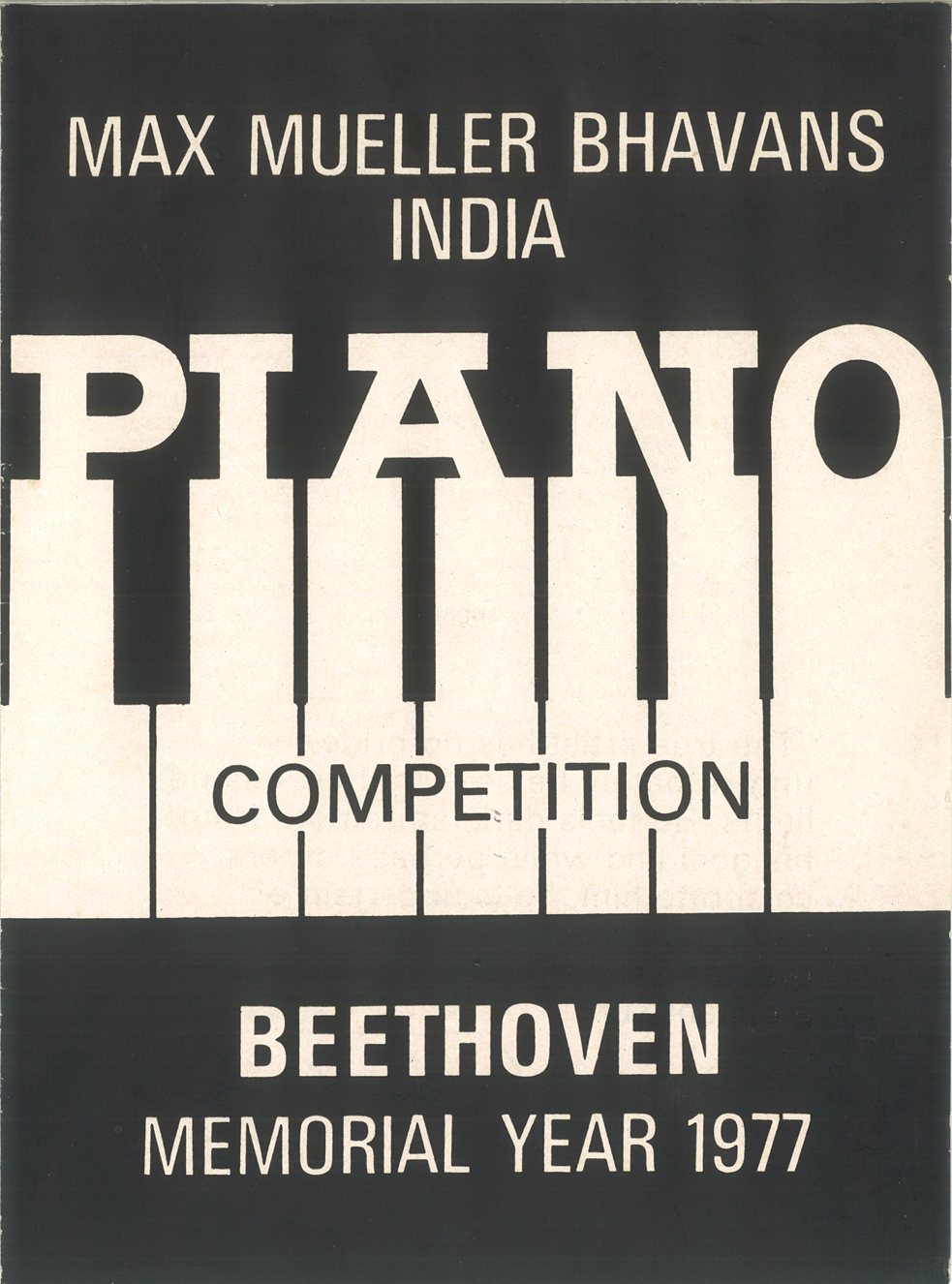 © Goethe-Institut / Max Mueller Bhavan Mumbai
Director Joachim Buehler, also a pianist and orchestra conductor, used his expertise to bolster an interest in classical music in Mumbai. He began working with the recently founded Bombay Chamber Orchestra (then called the Bombay Philharmonia), introducing German musicians for special programmes and conducting the orchestra till he left for his posting in South Korea in 1981. He also began a collaboration between Max Mueller Bhaven Mumbai (MMB Mumbai) and National Centre for Performing Arts (NCPA), Mumbai.
© Goethe-Institut / Max Mueller Bhavan Mumbai
Director Joachim Buehler, also a pianist and orchestra conductor, used his expertise to bolster an interest in classical music in Mumbai. He began working with the recently founded Bombay Chamber Orchestra (then called the Bombay Philharmonia), introducing German musicians for special programmes and conducting the orchestra till he left for his posting in South Korea in 1981. He also began a collaboration between Max Mueller Bhaven Mumbai (MMB Mumbai) and National Centre for Performing Arts (NCPA), Mumbai.
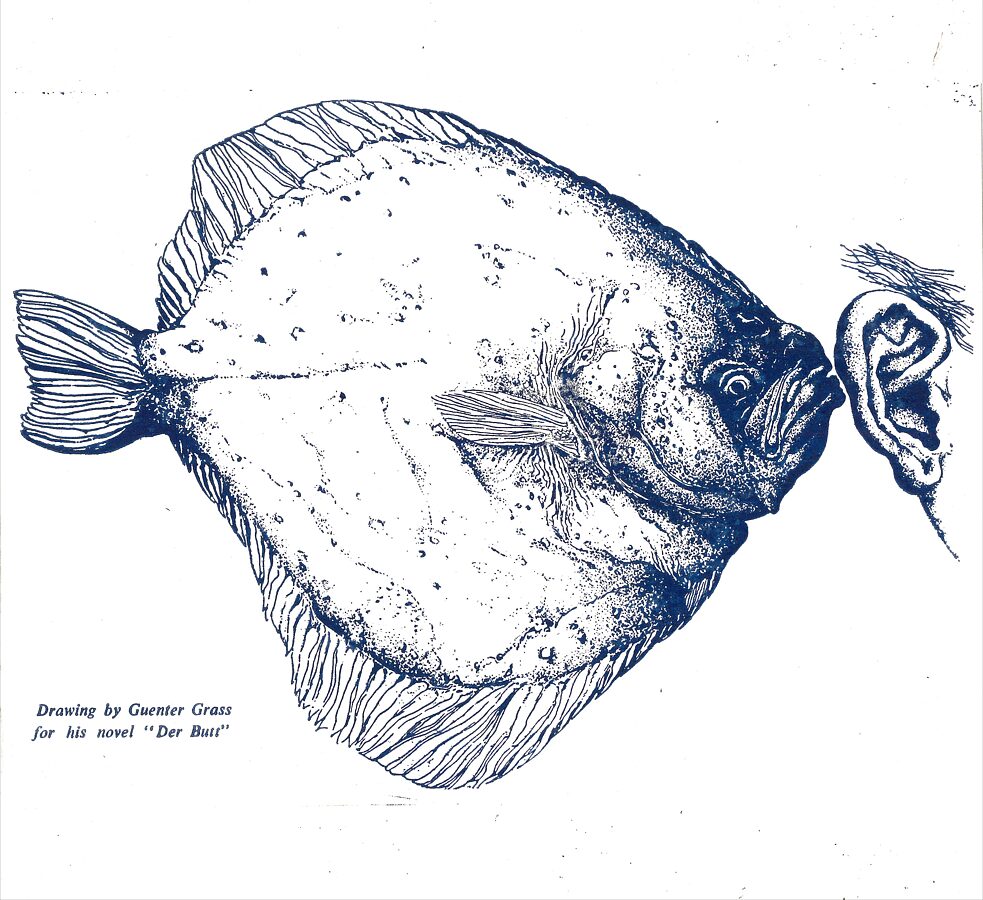 © Goethe-Institut / Max Mueller Bhavan Mumbai
Nobel Prize-winning novelist, poet, playwright, graphic artist, sculptor and wearer of many more hats, Günter Grass spent ten days in Mumbai and agreed to a public conversation at the Max Mueller Bhavan Mumbai. Grass returned to India again in 2005, invited by Dr Martin Wälde, who was then Director at Max Mueller Bhaven Kolkata.
© Goethe-Institut / Max Mueller Bhavan Mumbai
Nobel Prize-winning novelist, poet, playwright, graphic artist, sculptor and wearer of many more hats, Günter Grass spent ten days in Mumbai and agreed to a public conversation at the Max Mueller Bhavan Mumbai. Grass returned to India again in 2005, invited by Dr Martin Wälde, who was then Director at Max Mueller Bhaven Kolkata.
► Günter Grass: Now my smoking pays off
-
Astaad Debo | Ost-West Begegnungen 1984 -
Chandraleka | Ost-West Begegnungen 1984 -
Ileana Citaristi | Ost-West Begegnungen 1984 -
Susanne Linke | Ost-West Tanz Begegnungen 1984 -
Ost-West Theater Begegnungen 1986 (17.-25.01.1986, NCPA) -
Ost-West Theater Begegnungen 1986 (17.-25.01.1986, NCPA) -
Ost-West Begegnungen 1986 (NCPA) -
Georg Lechner | Ost-West Begegnungen (15.01-22.01.83, NCPA)
Dr. Georg Lechner initiated the ‘East West Encounters’ during his term as Director. Lasting four years, the project aimed to create a better cultural understanding between Germany and India, and included a series of East-West dialogues about art, music, theatre, dance, philosophy and science. The massive undertaking was also supported by the NCPA Mumbai (where many of these dialogues took place), the British High Commission and the Tata Institute of Fundamental Research. These encounters also led to long-term collaborations for the Institut, especially in the fields of dance – with exponents such as Chandralekha, Susanne Linke and Astad Deboo. The Encounters also featured artistes such as Pt. Bhimsen Joshi, Bhupen Kakkar, Smita Patil, Girish Karnad, Habib Tanvir, and many more.
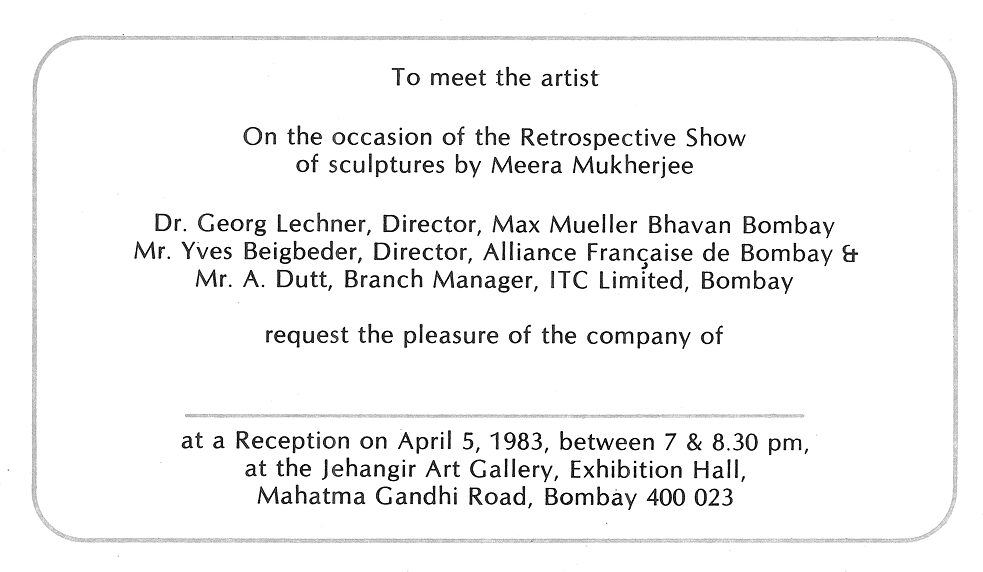 1986 | Meera Mukherje - programme invitation
| © Goethe-Institut / Max Mueller Bhavan Mumbai
Sculptor Meera Mukherjee’s relationship with Germany began in the 1950s with a scholarship to the Akademie der Bildenden Künste in Munich. Dr Lechner, who appreciated her work greatly, called her ‘an Indian artist of Expressionism’ and invited her to hold the first of what would be a number of exhibitions across the Goethe Instituts in India.
1986 | Meera Mukherje - programme invitation
| © Goethe-Institut / Max Mueller Bhavan Mumbai
Sculptor Meera Mukherjee’s relationship with Germany began in the 1950s with a scholarship to the Akademie der Bildenden Künste in Munich. Dr Lechner, who appreciated her work greatly, called her ‘an Indian artist of Expressionism’ and invited her to hold the first of what would be a number of exhibitions across the Goethe Instituts in India.
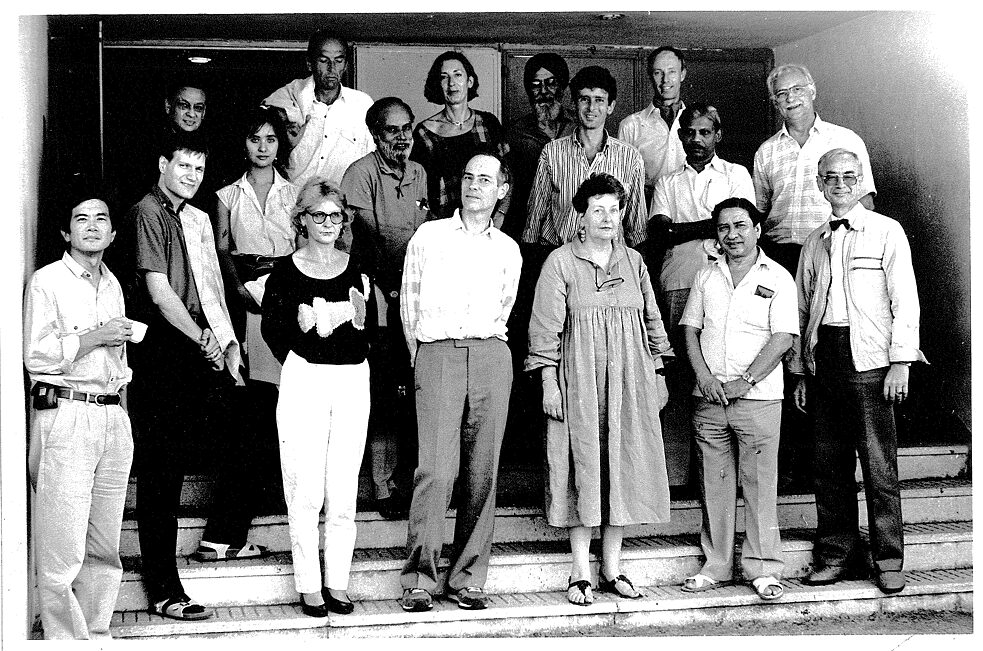 1987 | Chaos Order Catastrophe
| © Goethe-Institut / Max Mueller Bhavan Mumbai
Dr. Anke Wiegand-Kanzaki organised an international workshop titled Chaos, Order and Catastrophe at the NCPA Mumbai. The workshop was based around looking at seemingly simple constructs – chaos, order, catastrophe – in a deeper sense. Some of the attendees include Prof. E. C. G. Sudarshan (Institute of Mathematical Sciences, Madras), Prof. Rene Thom (lnstitut des Hautes Etudes, France), Prof. Jeet Uberoi (Delhi School of Economics), Prof. Peter Gleichman (University of Hannover), Professors Yogendra Singh, Karmeshu and R. Ramaswamy (Jawaharlal Nehru University, New Delhi), Prof. N. V. Joshi (Indian Institute of Science, Bangalore), Prof. Stefan Mueller (Max Planck Institute of Dortmund) and Prof. Mustansir Barma (Tata Institute of Fundamental Research, Mumbai).
1987 | Chaos Order Catastrophe
| © Goethe-Institut / Max Mueller Bhavan Mumbai
Dr. Anke Wiegand-Kanzaki organised an international workshop titled Chaos, Order and Catastrophe at the NCPA Mumbai. The workshop was based around looking at seemingly simple constructs – chaos, order, catastrophe – in a deeper sense. Some of the attendees include Prof. E. C. G. Sudarshan (Institute of Mathematical Sciences, Madras), Prof. Rene Thom (lnstitut des Hautes Etudes, France), Prof. Jeet Uberoi (Delhi School of Economics), Prof. Peter Gleichman (University of Hannover), Professors Yogendra Singh, Karmeshu and R. Ramaswamy (Jawaharlal Nehru University, New Delhi), Prof. N. V. Joshi (Indian Institute of Science, Bangalore), Prof. Stefan Mueller (Max Planck Institute of Dortmund) and Prof. Mustansir Barma (Tata Institute of Fundamental Research, Mumbai).
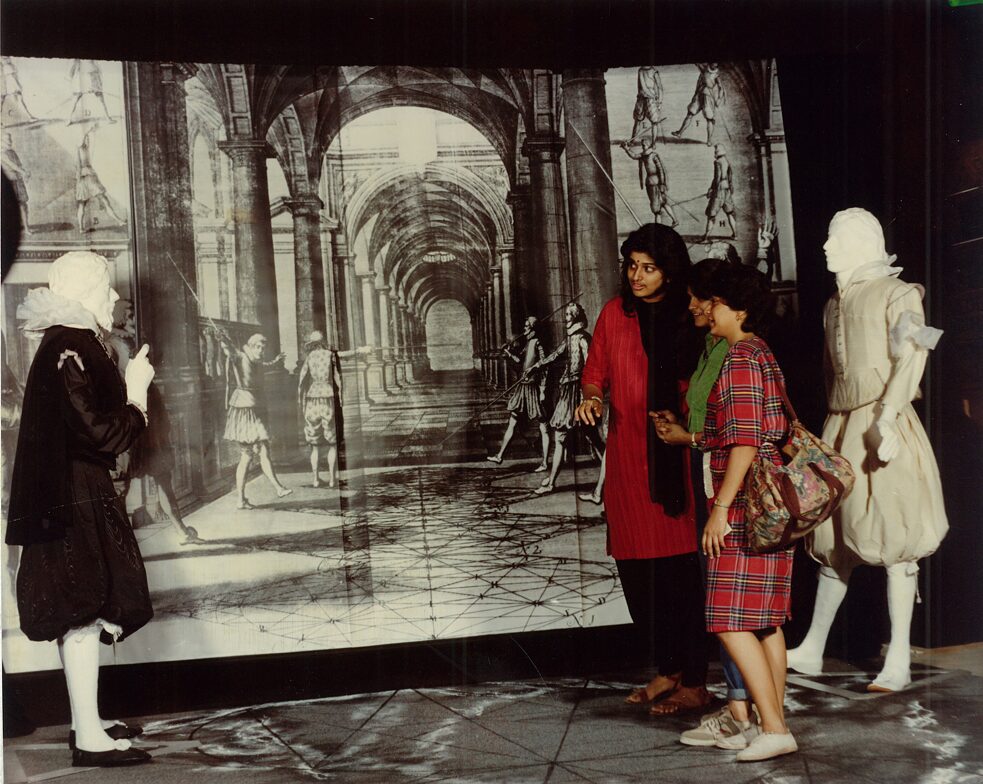 1988 | Symmetry Asymmetry
| © Goethe-Institut / Max Mueller Bhavan Mumbai
Dr. Wiegand-Kanzaki organised a second workshop – this time titled Symmetry-Asymmetry, in cooperation with the NCPA Mumbai, and the Italian and Swiss Consulates in Mumbai. The workshop comprised 24 scholars participating from India, Germany, Switzerland, Italy and the USA. Prof. Rudolf zur Lippe of the Oldenburg University was invited to put together an exhibition comprising more than 300 panels of picture-montages, objects and a sound collage.
1988 | Symmetry Asymmetry
| © Goethe-Institut / Max Mueller Bhavan Mumbai
Dr. Wiegand-Kanzaki organised a second workshop – this time titled Symmetry-Asymmetry, in cooperation with the NCPA Mumbai, and the Italian and Swiss Consulates in Mumbai. The workshop comprised 24 scholars participating from India, Germany, Switzerland, Italy and the USA. Prof. Rudolf zur Lippe of the Oldenburg University was invited to put together an exhibition comprising more than 300 panels of picture-montages, objects and a sound collage.
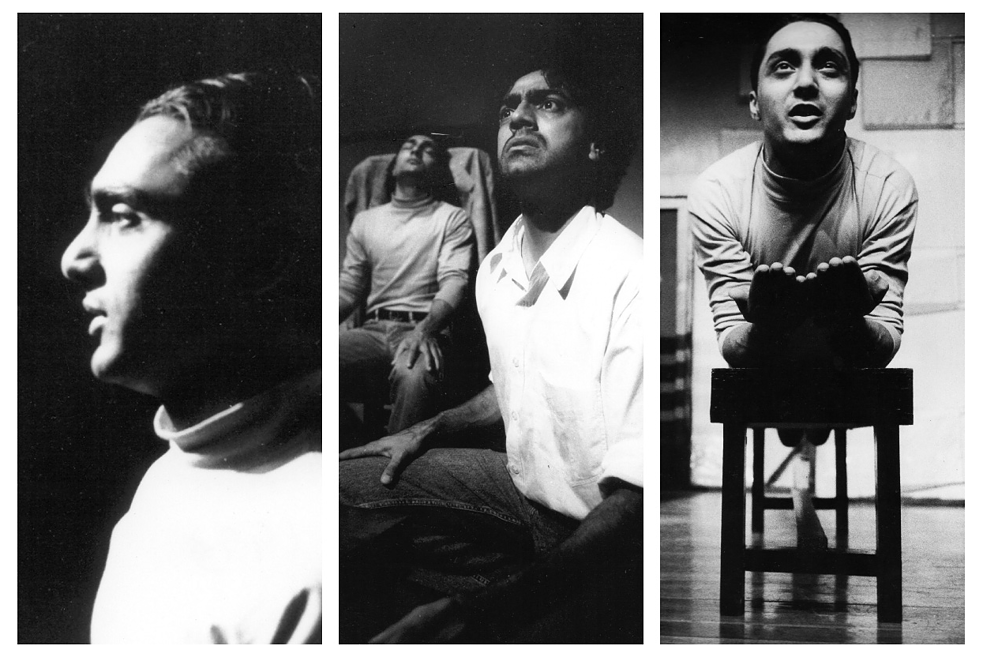 1992 | HIV AIDS - Are There Tigers, Rage Theatre
| © Goethe-Institut / Max Mueller Bhavan Mumbai
From the beginning of her term in January 1992, Dr. Anna Winterberg initiated an HIV/AIDS awareness programme with seminars for medical professionals, social workers and the scientific community to discuss the issue as well as forums for members of the public to interact with them to increase an awareness of the disease. This programme was in collaboration with the Indian Health Organisation, one of the institutions fighting to raise awareness of AIDS and HIV in India in the 1990s. This programme led to the first national conference on AIDS with medical professionals from India and Germany, in cooperation with the Society for Prevention of AIDS and the Directorate of Health Services, Government of Maharashtra. The Institut also supported a production of Rage Theatre’s piece ‘Are There Tigers in the Congo’, discussing the social-psychological ramifications of being HIV+.
1992 | HIV AIDS - Are There Tigers, Rage Theatre
| © Goethe-Institut / Max Mueller Bhavan Mumbai
From the beginning of her term in January 1992, Dr. Anna Winterberg initiated an HIV/AIDS awareness programme with seminars for medical professionals, social workers and the scientific community to discuss the issue as well as forums for members of the public to interact with them to increase an awareness of the disease. This programme was in collaboration with the Indian Health Organisation, one of the institutions fighting to raise awareness of AIDS and HIV in India in the 1990s. This programme led to the first national conference on AIDS with medical professionals from India and Germany, in cooperation with the Society for Prevention of AIDS and the Directorate of Health Services, Government of Maharashtra. The Institut also supported a production of Rage Theatre’s piece ‘Are There Tigers in the Congo’, discussing the social-psychological ramifications of being HIV+.
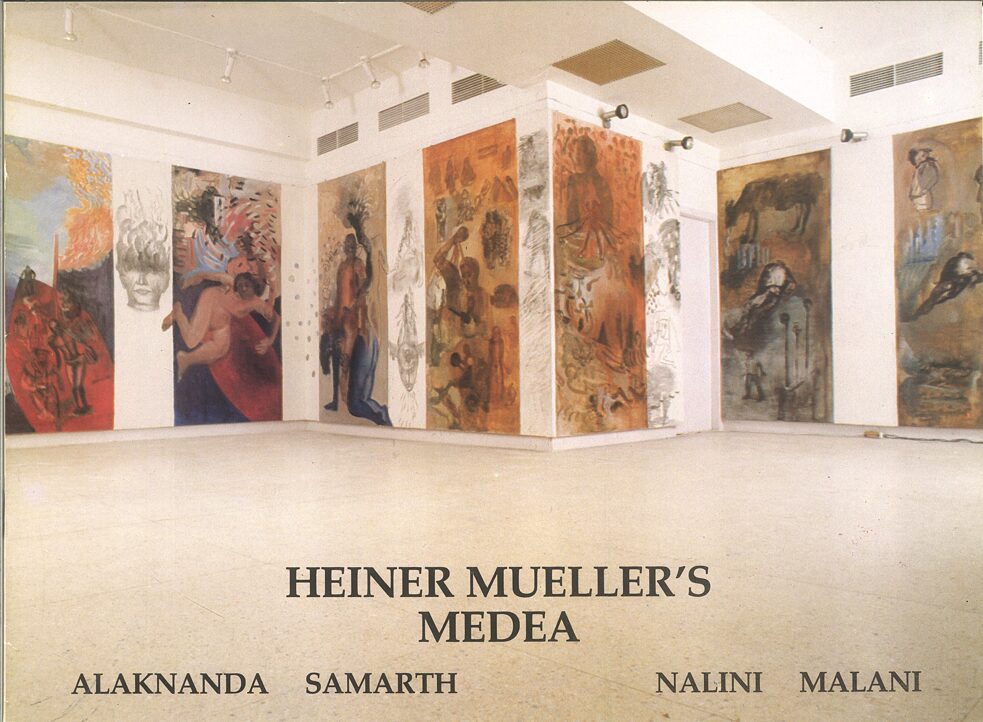 1993 | Nalini MalanIi, Medea brochure
| © Goethe-Institut / Max Mueller Bhavan Mumbai
In the winter of 1993, Heiner Müller’s play Medeamaterial, was performed at the Stuttgart Hall as a collaboration between visual artist Nalini Malani and theatre-person Alaknanda Samarth. Malani created installations for Samarth to perform in. Subsequently, an eponymous film based on the collaboration was directed by Nalini Malani in 1994. In 1995, in collaboration with Gallery Chemould (now Chemould Prescott Road), Malani exhibited the Medea Installation at the Stuttgart Hall comprising of three reverse painted robes originally exhibited at the First Africus Biennale in Johannesburg in early 1995. Malani also worked on a performance of Bertolt Brecht’s The Job, which was also performed at the Institut.
1993 | Nalini MalanIi, Medea brochure
| © Goethe-Institut / Max Mueller Bhavan Mumbai
In the winter of 1993, Heiner Müller’s play Medeamaterial, was performed at the Stuttgart Hall as a collaboration between visual artist Nalini Malani and theatre-person Alaknanda Samarth. Malani created installations for Samarth to perform in. Subsequently, an eponymous film based on the collaboration was directed by Nalini Malani in 1994. In 1995, in collaboration with Gallery Chemould (now Chemould Prescott Road), Malani exhibited the Medea Installation at the Stuttgart Hall comprising of three reverse painted robes originally exhibited at the First Africus Biennale in Johannesburg in early 1995. Malani also worked on a performance of Bertolt Brecht’s The Job, which was also performed at the Institut.
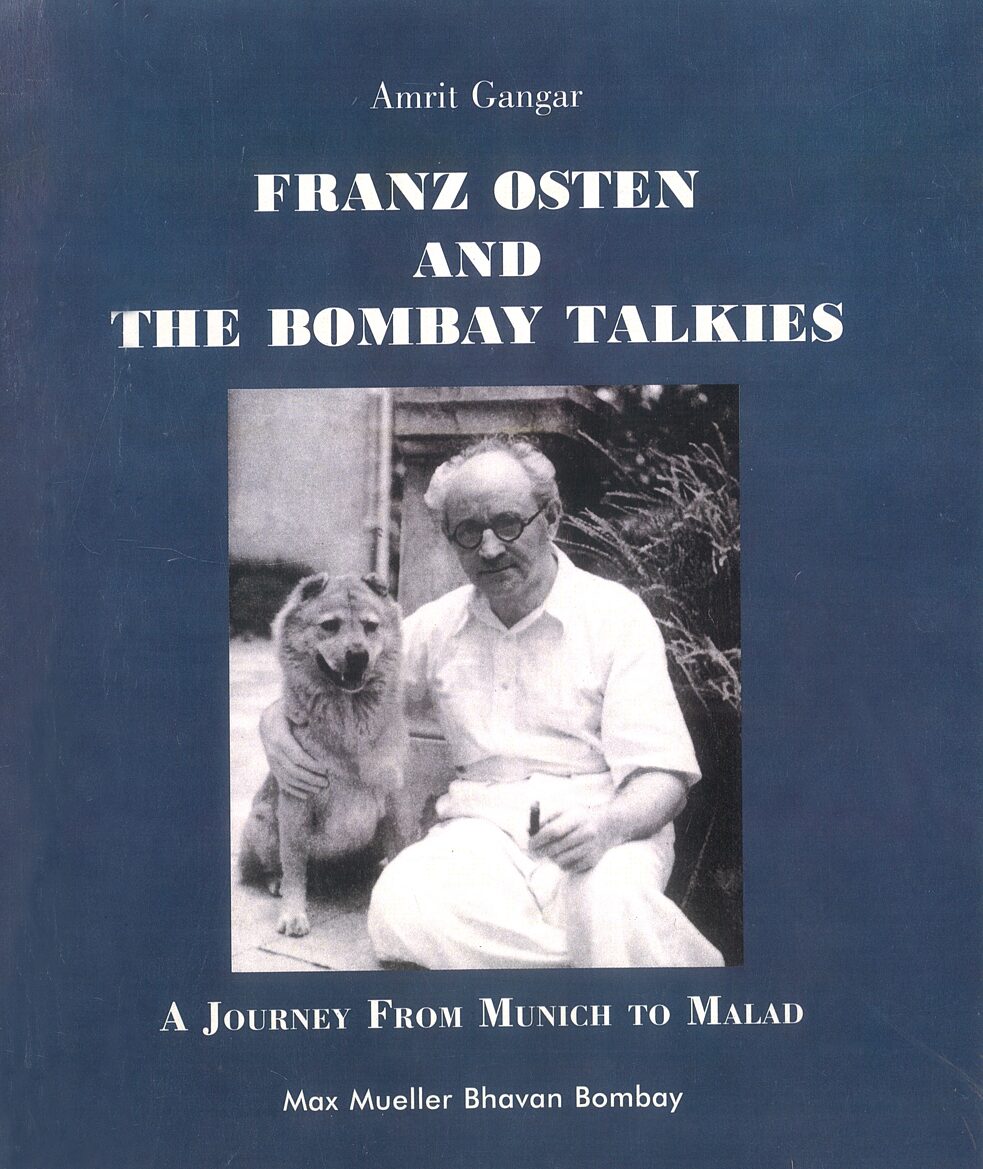 1999 | Franz Osten - book cover
| © Goethe-Institut / Max Mueller Bhavan Mumbai
Images of India in European Cinema – a two year project discussing German engagement with cinema in India, the work of Franz Osten, Bombay Talkies and screening films such as Light of Asia, Throw of Dice and many others with live orchestras or musicians providing the soundtrack.
1999 | Franz Osten - book cover
| © Goethe-Institut / Max Mueller Bhavan Mumbai
Images of India in European Cinema – a two year project discussing German engagement with cinema in India, the work of Franz Osten, Bombay Talkies and screening films such as Light of Asia, Throw of Dice and many others with live orchestras or musicians providing the soundtrack.
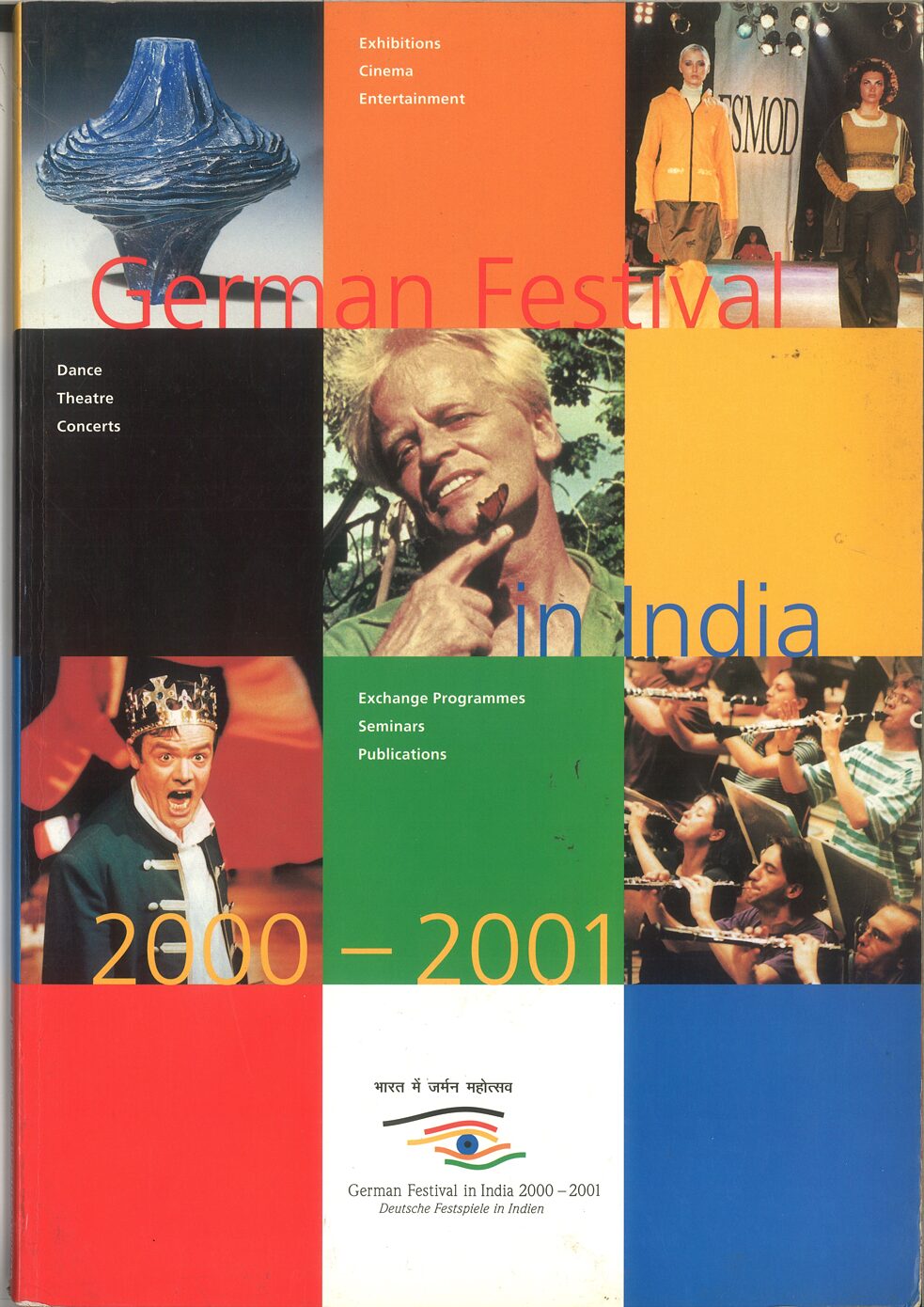 2000 | German Festival Katalog
| © Goethe-Institut / Max Mueller Bhavan Mumbai
The Goethe Library was unfortunately closed, and projects were scaled back due to a lack of funds. Stuttgart Hall was returned to the CSMVS Museum, and the Institut functioned only as a language institute with intermittent film programming. This period did not last long however, and just on the horizon was the German Festival in India – an India-wide programme encompassing visual art, film, the performing arts, exchange programmes, seminars and much more.
2000 | German Festival Katalog
| © Goethe-Institut / Max Mueller Bhavan Mumbai
The Goethe Library was unfortunately closed, and projects were scaled back due to a lack of funds. Stuttgart Hall was returned to the CSMVS Museum, and the Institut functioned only as a language institute with intermittent film programming. This period did not last long however, and just on the horizon was the German Festival in India – an India-wide programme encompassing visual art, film, the performing arts, exchange programmes, seminars and much more.
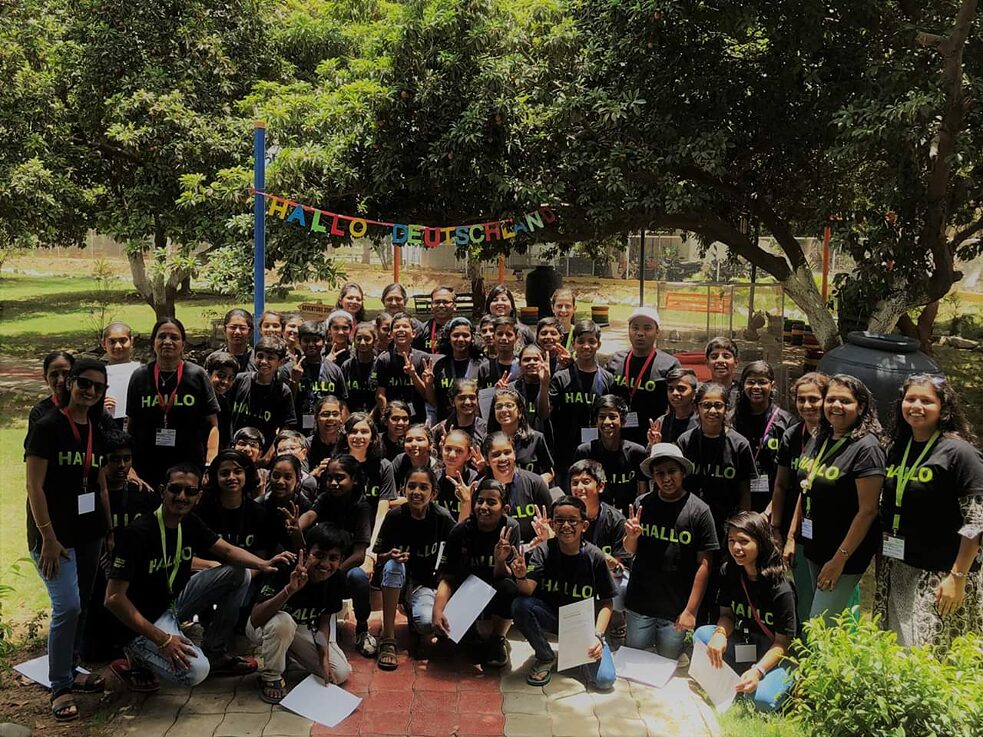 2008 | PASCH activities
| © Goethe-Institut / Max Mueller Bhavan Mumbai
2008 saw the beginning of the PASCH programme and the beginning of the Educational Support Service department BKD (Bildungskooperation Deutsch). The PASCH programme, a project initiated by the minister of Foreign Affairs Germany, formed a network of 2000 schools worldwide teaching German as a foreign language. The team of the Educational Support Service department (BKD) in Mumbai supports 5 PASCH schools in Mumbai and Vadodara as well as a number of schools, colleges, institutions, their teachers and students in Mumbai, Northern Maharashtra, Gujarat and Jabalpur region.
2008 | PASCH activities
| © Goethe-Institut / Max Mueller Bhavan Mumbai
2008 saw the beginning of the PASCH programme and the beginning of the Educational Support Service department BKD (Bildungskooperation Deutsch). The PASCH programme, a project initiated by the minister of Foreign Affairs Germany, formed a network of 2000 schools worldwide teaching German as a foreign language. The team of the Educational Support Service department (BKD) in Mumbai supports 5 PASCH schools in Mumbai and Vadodara as well as a number of schools, colleges, institutions, their teachers and students in Mumbai, Northern Maharashtra, Gujarat and Jabalpur region.
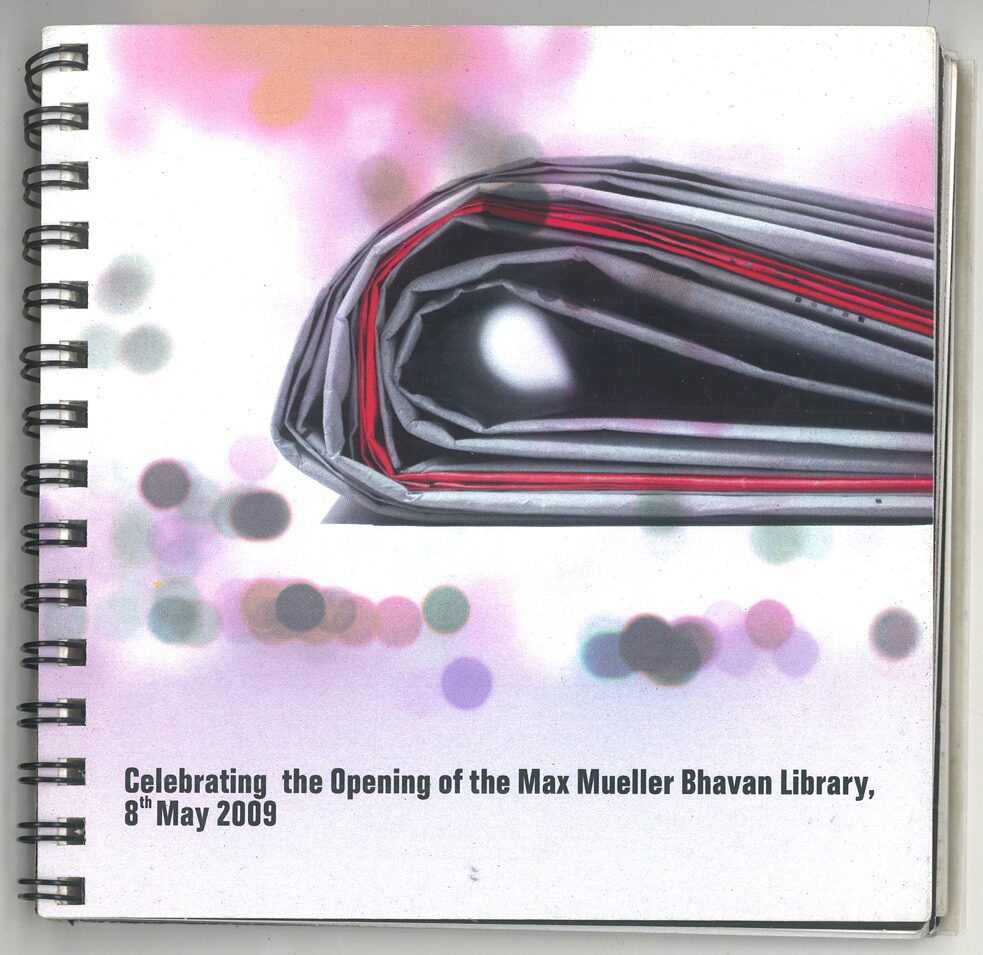 2009 | Library opening in Mumbai
| © Goethe-Institut / Max Mueller Bhavan Mumbai
Library MMB, which had been closed since 2000, was renovated and reopened under the aegis of director Dr Marla Stukenberg, to its current form much to the delight of our students, and a number of artists, arts practitioners and theatre makers.
2009 | Library opening in Mumbai
| © Goethe-Institut / Max Mueller Bhavan Mumbai
Library MMB, which had been closed since 2000, was renovated and reopened under the aegis of director Dr Marla Stukenberg, to its current form much to the delight of our students, and a number of artists, arts practitioners and theatre makers.
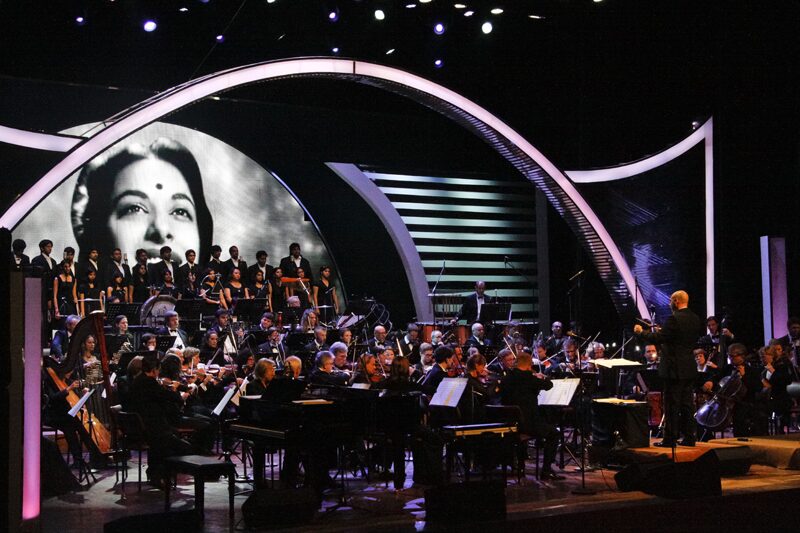 2012 | Classic Incantation Concert
| © Goethe-Institut / Max Mueller Bhavan Mumbai
A collaborative project led by Max Mueller Bhavan Mumbai, Classic Incantations brought together legendary Indian composer AR Rahman and students from the KM Music Conservatory he founded with the German Film Orchestra Babelsberg. A group of 100 musicians from the Conservatory and the Orchestra performed together with Rahman across five cities in India, beginning with Mumbai.
2012 | Classic Incantation Concert
| © Goethe-Institut / Max Mueller Bhavan Mumbai
A collaborative project led by Max Mueller Bhavan Mumbai, Classic Incantations brought together legendary Indian composer AR Rahman and students from the KM Music Conservatory he founded with the German Film Orchestra Babelsberg. A group of 100 musicians from the Conservatory and the Orchestra performed together with Rahman across five cities in India, beginning with Mumbai.
► Classic Incantations with AR Rahman
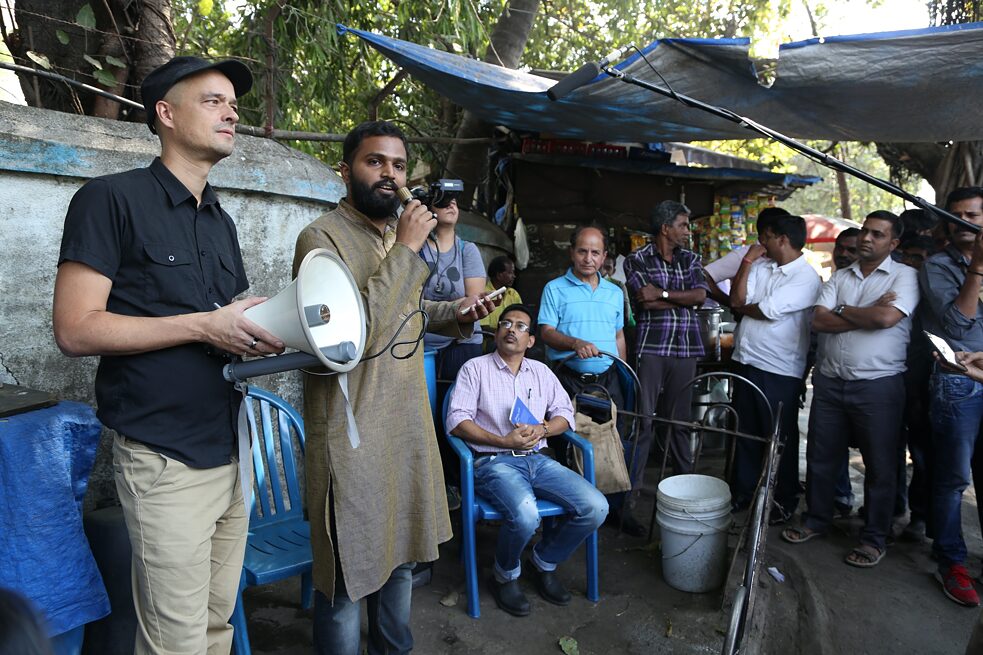 2014 | Poets Translating Poets
| © Goethe-Institut / Max Mueller Bhavan Mumbai
Poets Translating Poets, a translation-based project headed by the Mumbai Institut brought together regional language poets from across India – from Kashmir to the North East to Bangladesh with poets from Germany, to work in teams to create new versions of each other’s poetry. The project, conceived by incoming director Dr Martin Wälde, resulted in a massive poetry festival at the Institut, where nearly a hundred poets performed indoors, on the streets having chai and across the city engaging with different linguistic communities, truly exploring the metropolitan nature of Mumbai.
2014 | Poets Translating Poets
| © Goethe-Institut / Max Mueller Bhavan Mumbai
Poets Translating Poets, a translation-based project headed by the Mumbai Institut brought together regional language poets from across India – from Kashmir to the North East to Bangladesh with poets from Germany, to work in teams to create new versions of each other’s poetry. The project, conceived by incoming director Dr Martin Wälde, resulted in a massive poetry festival at the Institut, where nearly a hundred poets performed indoors, on the streets having chai and across the city engaging with different linguistic communities, truly exploring the metropolitan nature of Mumbai.
► Website: Poets Translating Poets
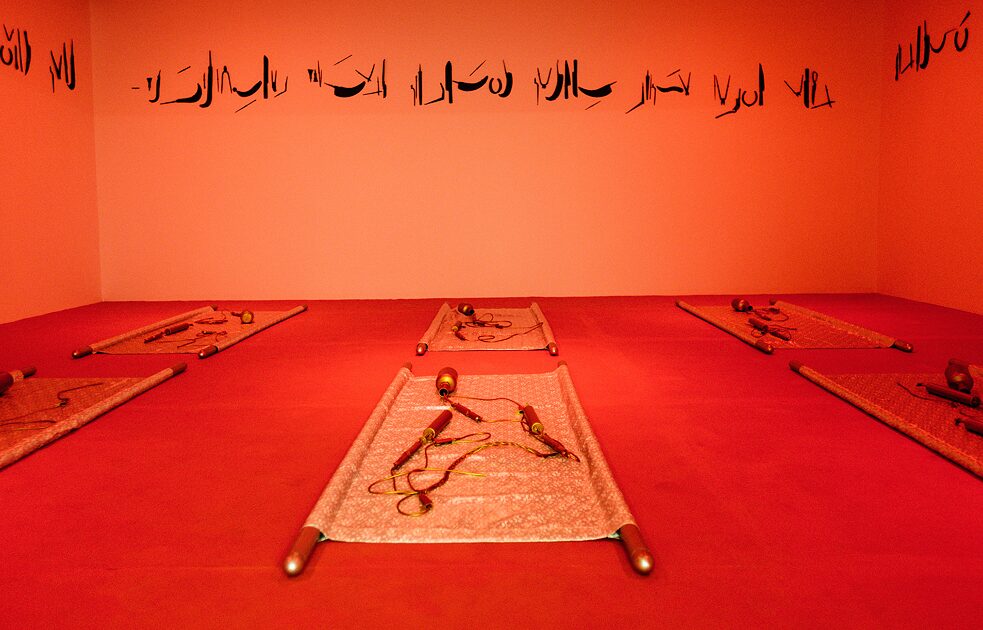 2015 | Ausstellung in der Galerie MMB
| © Goethe-Institut / Max Mueller Bhavan Mumbai
The Stuttgart Hall was reinstituted to the Max Mueller Bhavan Mumbai in 2013 by Dr Marla Stukenberg before her tenure ended. Upon his arrival, Dr Martin Wälde saw the need for a neutral, non-commercial art space in Mumbai, and established Gallery MMB with the mandate to display world-class German and Indian contemporary art. Since its inception, Gallery MMB has hosted multiple exhibitions including group shows like In Order to Join (2014) with 14 Indian and International female artists, Fabrik (Venice Biennale 2016 German Pavilion), Open Codes, as it rises into the air: listening in practice and solo projects with artists Amar Kanwar, Marcel Odenbach, Yael Bartana, Peter Bialobrzeski and many more. Now in its 5th year, Gallery MMB is recognised as an art space to watch out for, acting as the nucleus from which talks, conferences and workshops are initiated.
2015 | Ausstellung in der Galerie MMB
| © Goethe-Institut / Max Mueller Bhavan Mumbai
The Stuttgart Hall was reinstituted to the Max Mueller Bhavan Mumbai in 2013 by Dr Marla Stukenberg before her tenure ended. Upon his arrival, Dr Martin Wälde saw the need for a neutral, non-commercial art space in Mumbai, and established Gallery MMB with the mandate to display world-class German and Indian contemporary art. Since its inception, Gallery MMB has hosted multiple exhibitions including group shows like In Order to Join (2014) with 14 Indian and International female artists, Fabrik (Venice Biennale 2016 German Pavilion), Open Codes, as it rises into the air: listening in practice and solo projects with artists Amar Kanwar, Marcel Odenbach, Yael Bartana, Peter Bialobrzeski and many more. Now in its 5th year, Gallery MMB is recognised as an art space to watch out for, acting as the nucleus from which talks, conferences and workshops are initiated.
► Exhibitions at Gallery MMB
-
2018 | Open Codes at the Kala Ghoda Street Festival -
2018 | Open Codes at the Kala Ghoda Street Festival -
2018 | Open Codes at the Kala Ghoda Street Festival -
2018 | Open Codes at the Kala Ghoda Street Festival -
2018 | Open Codes at the Kala Ghoda Street Festival -
2018 | Open Codes at the Kala Ghoda Street Festival
The Institut collaborated with the ZKM Center for Art and Media, Karlsruhe to host our very first digital exhibition ‘Open Codes’ – showcasing art created from codes and scripts, used to get our audience thinking of what it is like to live and create in an increasingly programmed world. The exhibition kickstarted the first of a series of coding workshops and a hackathon, which continued into 2019, and sees an increasing interest among the people of Mumbai.
► Open Codes - Digital Culture Techniques
